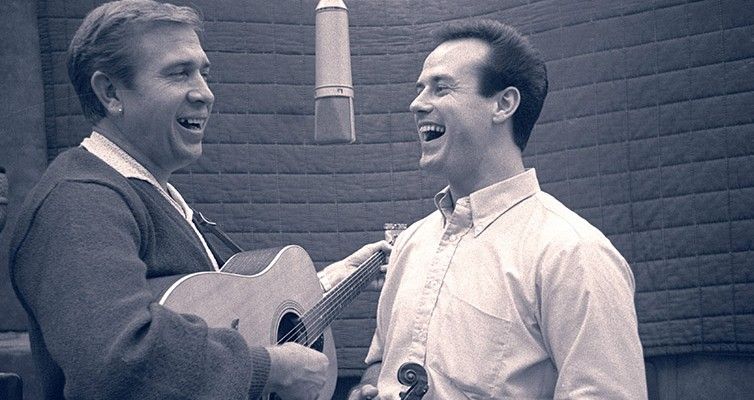
A Joyous Saloon Reverie Where Simplicity and Spirit Collide in Pure Honky-Tonk Harmony
Released in 1967, “Sam’s Place” by Buck Owens became a chart-topping beacon of the Bakersfield sound, soaring to No. 1 on the Billboard Hot Country Singles chart. It was featured on the album “Your Tender Loving Care,” and cemented Buck Owens’ standing as a pioneer of a genre that rebelled against the polished restraint of Nashville’s countrypolitan veneer. With its rollicking tempo, twang-soaked Telecaster licks, and spirited narrative, “Sam’s Place” encapsulates the unpretentious joy and rustic romanticism that defined Owens’ musical ethos.
The song opens its swinging saloon doors with a jubilant embrace: “There’s a place down the street we call Sam’s Place / It starts a-jumpin’ every evening when the sun goes down.” From the very first line, Owens transports us—not to an abstract emotional landscape—but to a living, breathing corner of small-town America, where jukeboxes blare into the night and laughter mingles with cigarette smoke. “Sam’s Place” is less a traditional story-song than a vibrant tableau, an affectionate portrait of communal escape that resonates deeply with those who have ever sought solace—or excitement—under neon lights.
The genius of Buck Owens, particularly evident here, lies in his ability to distill complex feelings into deceptively simple lines. There’s no overt drama in “Sam’s Place,” no heartbroken cowboy nursing wounds over whiskey. Instead, we find reprieve from life’s heavier burdens in the uncomplicated pleasures of human connection—romantic flirtation, music, and movement. “There’s a cute little waitress at Sam’s Place / She’s got twinkly eyes and rosy cheeks and long blonde hair.” This line is not just descriptive—it’s evocative of Americana itself: idyllic yet grounded, flirtatious yet wholesome.
Musically, the song is signature Bakersfield—a crisp shuffle beat driven by Don Rich’s razor-sharp guitar work and Owens’ buoyant vocal phrasing. The absence of string sections or lush background harmonies is intentional; Owens preferred clarity over polish, grit over gloss. In this pared-down aesthetic lies the true soul of “Sam’s Place,” echoing through honky-tonks and dance halls where authenticity matters more than artifice.
Yet beneath its light-hearted surface hums something more profound: a celebration of spaces that exist outside societal pressures—places where identities blur and people find common rhythm. In an era marked by cultural upheaval and shifting social landscapes, “Sam’s Place” offered sanctuary through song. It reminded listeners that joy itself can be an act of resistance—that moments stolen on sawdust floors are as meaningful as grand declarations or epic ballads.
Today, “Sam’s Place” endures not because it seeks profundity but because it achieves it through candor. It is at once a time capsule and a timeless invitation—to step out of the noise and into something elemental: rhythm, laughter, love. In under two minutes, Buck Owens crafted not just a hit song, but an eternal Saturday night etched in vinyl grooves—a place we all recognize, even if we’ve never been there.